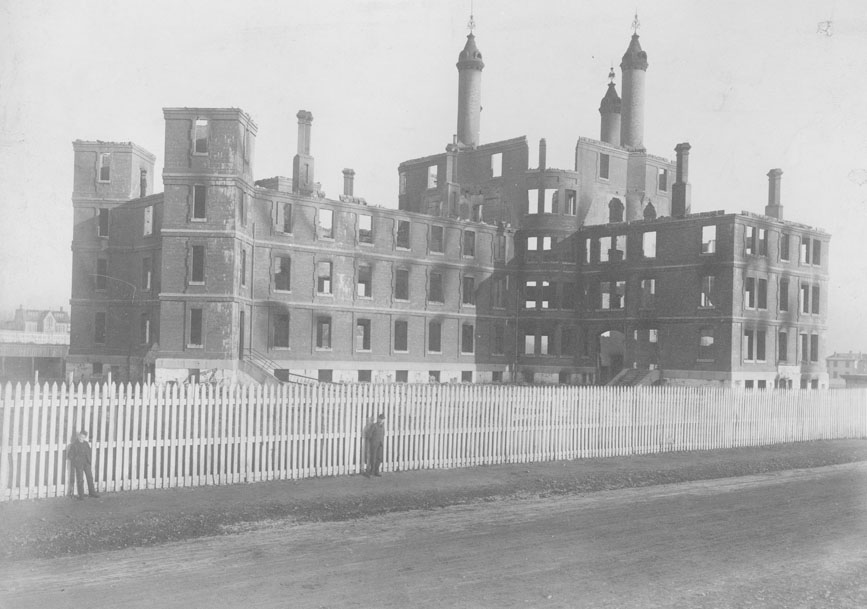Quote:
Originally Posted by someone123

I've found pictures of the old poor house after it burned down, and the new poor house, but never the original before the fire.
|
This is the closest I have ever seen (from 1880):
 Source
Source
IIRC, the four tall tubular structures were ventilation shafts (which IMHO make it appear castle-like in the photo).
Here's a pic from after the fire, as you mentioned.
 Source
Source
I can't help but think that there must have been good clear photos taken of it after construction was complete as it would have been one of the more impressive-looking buildings in Halifax in the 1870s-80s. Maybe they will turn up some day.
Quote:
In 1868, the firm Peters, Blaiklock & Peters, took the contract to construct a large poor house on the corner of Robie and South Streets. The first home in Halifax had been located on the spring garden road, but it soon proved inadequate and for many years, petitions were written proposing the construction of a new and more spacious building. The Acadian Recorder of 17 April, 1867 carried a notice of tender for “the erection of a brick building, on the south common.”
Henry Peters (buried in Holy Cross) employed the designs of David Sterling, whose plans called for a building in the form of a “latin cross, with four wings descending from a central building, which measured 180 feet long, 50 feet wide, and four stories high.” The construction was completed near Christmas 1869, and according to Halifax historian Peter McGuigan, the new poor house was “a noble monument to charity and benevolence... it was a combination of an old-age home, an asylum for poor families, a minor hospital, a refuge for the mentally and physically disabled, and a place for inebriates.”
On 6 November 1882 the poor house was the scene of a tragic and deadly fire. The inferno broke out in the kitchen area of the building (in the basement where twenty cord of wood was stored) around midnight. It quickly spread up the elevator shaft and into the dormitories, which caused “utmost terror among the four or five hundred inmates.” That evening the wind was from the north-west and the first witnesses to the scene saw smoke pouring out of the windows, but could not see flames.
|
Source